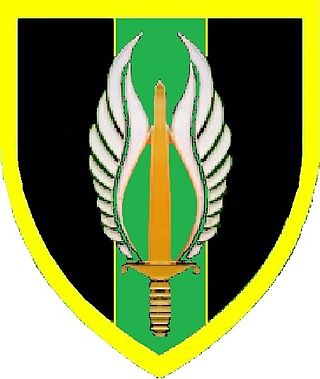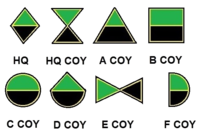
Eswatini, officially the Kingdom of Eswatini and formerly named Swaziland, is a landlocked country in Southern Africa. It is bordered by Mozambique to its northeast and South Africa to its north, west, south, and southeast. At no more than 200 km (120 mi) north to south and 130 km (81 mi) east to west, Eswatini is one of the smallest countries in Africa; despite this, its climate and topography are diverse, ranging from a cool and mountainous highveld to a hot and dry lowveld.

Artifacts indicating human activity dating back to the early Stone Age have been found in the Kingdom of Eswatini. The earliest known inhabitants of the region were Khoisan hunter-gatherers. Later, the population became predominantly Nguni during and after the great Bantu migrations. People speaking languages ancestral to the current Sotho and Nguni languages began settling no later than the 11th century. The country now derives its name from a later king named Mswati II. Mswati II was the greatest of the fighting kings of Eswatini, and he greatly extended the area of the country to twice its current size. The people of Eswatini largely belong to a number of clans that can be categorized as Emakhandzambili, Bemdzabu, and Emafikamuva, depending on when and how they settled in Eswatini.

The South African Army is the principal land warfare force of South Africa, a part of the South African National Defence Force (SANDF), along with the South African Air Force, South African Navy and South African Military Health Service. The Army is commanded by the Chief of the Army, who is subordinate to the Chief of the SANDF.

The South West Africa Territorial Force (SWATF) was an auxiliary arm of the South African Defence Force (SADF) and comprised the armed forces of South West Africa from 1977 to 1989. It emerged as a product of South Africa's political control of the territory which was granted to the former as a League of Nations mandate following World War I.

The South African Border War, also known as the Namibian War of Independence, and sometimes denoted in South Africa as the Angolan Bush War, was a largely asymmetric conflict that occurred in Namibia, Zambia, and Angola from 26 August 1966 to 21 March 1990. It was fought between the South African Defence Force (SADF) and the People's Liberation Army of Namibia (PLAN), an armed wing of the South West African People's Organisation (SWAPO). The South African Border War resulted in some of the largest battles on the African continent since World War II and was closely intertwined with the Angolan Civil War.

Lohatla is a training area of the South African National Defence Force. It is located in the Northern Cape province of South Africa and is home to the SA Army Combat Training Centre, which is part of the South African Army Training Formation.

44 Parachute Brigade was a parachute infantry brigade of the South African Army. It was founded on 20 April 1978, by Colonel Jan Breytenbach, following the disbandment of 1 SA Corps and the battle of Cassinga. Upon formation, the brigade was commanded by Brigadier M. J. du Plessis, who was assigned the task of establishing by working with the Parachute Staff Officer, Colonel Jan Breytenbach. At the time du Plessis was the commanding officer of the Orange Free State Command and had previous experience serving in 1 Parachute Battalion. Breytenbach had also been a member of 1 Parachute Battalion and had also founded the South African Special Forces Brigade and 32 Battalion. The location that was chosen for the brigade's headquarters was in the lines of the OFS Cmd Headquarters, next to the old Tempe Airfield in Bloemfontein.

The Job Masego Regiment is a reserve mechanised infantry regiment of the South African Army.

21 South African Infantry Battalion is an infantry battalion of the South African Army. The unit has its origin as 21 Battalion, an apartheid era unit used to train black South African men as soldiers.

Eastern Province Command was a command of the South African Army.

7 South African Infantry Division was a formation of the South African Army, active from the 1960s to 1999.

6 Medical Battalion Group is a Medical Battalion in the South African Military Health Service (SAMHS). SAMHS is the fourth Arm of Service of the South African National Defence Force (SANDF).

8 South African Armoured Division was a formation of the South African Army, active from the 1970s to 1999.

113 Battalion was a motorised infantry unit of the South African Army.

116 Battalion was a motorised infantry unit of the South African Army.

151 South African Infantry Battalion was a motorised infantry unit of the South African Army.

111 Battalion was a motorised infantry unit of the South African Army.

115 South African Infantry Battalion was a motorised infantry unit of the South African Army.

118 South African Infantry Battalion was a motorised infantry unit of the South African Army.

South West Africa Command was a command of the South African Army.























